Table Of Content
- 1. What is Advertising Effectiveness
- 2. Key Metrics to Measure Advertising Effectiveness
- 3. Methods for Measuring Advertising Effectiveness
- 4. Challenges in Measuring Advertising Effectiveness
- 5. Best Practices for Improving Advertising Effectiveness
- 6. Conclusion
- 7. Why choose Excellent Publicity for your brand advertising?
In today's market of competition for the attention of potential customers, it may prove hard to know whether the efforts toward advertising your business pay off. More so, in a world where competition is increasingly proving to surge each day, there is no clear indication of any specification on how you would determine whether your advertising efforts work. Knowing this will unlock more potential in using your marketing budget and ensure that the messages placed hit the right pulse among your audience.
It takes you step-by-step through the key metrics and methods for measuring how well your advertising is working. What it covers applies to both the small business owner and large teams involved in marketing, guiding you through a practical approach to measure campaigns and make decisions based on data. Important metrics covered include return on investment, conversion rates, and brand awareness; along with A/B testing and even how to use customer feedback as a valid metric.
Let's begin this journey together and unravel some mysteries over how an ad might truly be measured!
What is Advertising Effectiveness
Advertising effectiveness means the degree to which an advertising campaign achieves its intended aims, like increased sales, brand awareness, and customer engagement. Measuring advertising effectiveness measures the influence of advertisements on the target audience; hence, it decides if the said advertisements inspire actions and lead to some type of conversion. The awareness of advertising effectiveness helps business firms optimize their strategies, make great resource allocations, and effectively improve their ROI.

Key Metrics to Measure Advertising Effectiveness
Return on Investment (ROI)
ROI is one of the significant measures to calculate the profit yield from any specific campaign or advertisement. This measures the return generated by the campaign relative to the total cost incurred during advertising efforts. Then after getting the correct figure, multiply it by 100 to obtain a percentage. After all, a positive ROI is the ultimate goal of each marketing plan: revenue gained is greater than cost. Tracking, however, makes it easier to find how to make money from a particular campaign: which of your campaigns work best and which places to put more resources. And within regular ROI tracking, companies can fine-tune their strategies to maximize profitability and guarantee sustainable growth.

Conversion Rate
The conversion rate is a flag indicator of how the advertising campaign turns potential customers into actual buyers. The conversion rate is determined by taking how many conversions there are, be they sales or sign-ups, and dividing that by the total number of visitors. It then must be multiplied by 100 in order to figure the percentage. The better the conversion rate is, the more effective an ad is at resonating well with the target audience and compelling the audience into taking action. Conversion optimization is done by changing the ad copy, targeting the right demographics, and optimizing the user's experience through the landing pages. This metric must be reviewed constantly with necessary adjustments to be termed successful.

Click-Through Rate (CTR)
Click Through Rate, CTR measures if an ad is able to attract the attention of the users or not. It is calculated by dividing the clicks on the ad by the total impressions received and then multiplying it by 100 to express it in percent. High CTR is determined when ad content is compelling enough as well as relevant to the audience, thus causing the traffic to a specific website or landing page to increase. Engagement graphics, compelling calls-to-action, and focused messaging are just a few ways that companies increase the CTR of their ads. So why is it important to determine CTR? It is important to know this behavior and data-driven adjustments so marketers can make their campaigns perform better for their audience.

Cost Per Acquisition (CPA)
Cost Per Acquisition refers to the cost incurred in acquiring a new customer by an advertisement. This is always calculated as the total amount of spending on ads divided by the number of new customers acquired in a given period. Marketing dollars must be maximized if the CPA is low, as it can mean the campaign is turning leads into customers efficiently. Understanding CPA helps businesses measure the power of their advertised efforts as well as what areas to improve upon. Campaign optimization to reduce the cost-per-acquisition price makes businesses more profitable since their marketing efforts yield the highest possible returns.
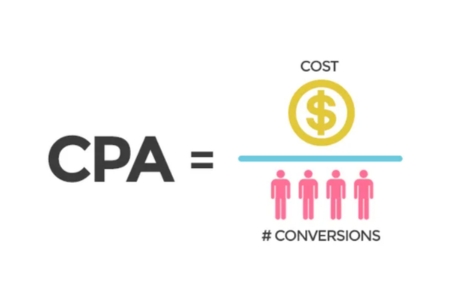
Brand Awareness and Engagement Metrics
Brand awareness and engagement metrics measure the effectiveness of an advertisement campaign to increase the visibility of a brand and prompt the audience to engage with the brand. The metrics include impressions, social media shares, comments, and time spent on a website. For example, a high engagement score would indicate awareness of the brand but so does the need for the brand's products. All these scores help firms compare how well an advertisement message works and therefore create an improvement either in the message or the way it is presented to acquire greater visibility. This means that a business would be able to enjoy loyal customership and generate more sales in the competitive market.
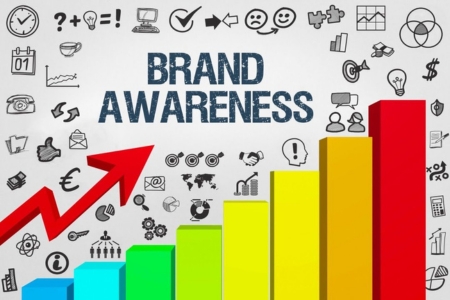
Methods for Measuring Advertising Effectiveness
A/B Testing
A/B testing is an effective way to test different types of ads. It works on the principle where two versions of the same ad are designed A and Version And sent out simultaneously to find out which version performs better. Within this framework of variation, marketers can promptly gain insight about which source is more dominant at engagement or conversion by varying one variable at a time, for instance, headlines, images, or calls to action. A/B testing brings very useful insights about preferences and behavior patterns of the audiences in business. Businesses can now, therefore, easily make high-performance campaign decisions backed up with data. Regular practice of A/B tests enables the refinement of the strategy concerning making the efforts in advertising as relevant and as effective as possible.

Tracking Tools and Analytics Platforms
A tracking tool and analytics platform offer real-time understanding of the effectiveness of the advertising. These platforms—Google Analytics and Facebook Ads Manager, among others—provide a very clear view of what's going on in user behavior, campaign performance, and conversion metrics. It will enable businesses to observe the all-important metrics—impressions, clicks, and conversions—and to make analysis and adjustments at the right time. Through such information from the platforms, marketers will know which campaigns are working and which ones need improvement. Tracking tools don't just make measuring easier but also enable businesses to change their ads in real time.
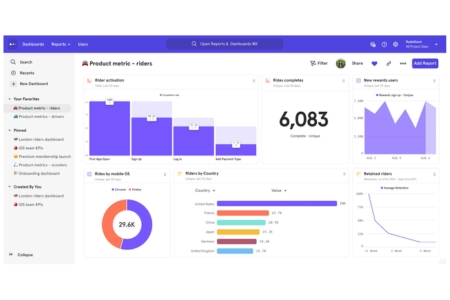
Surveys and Customer Feedback
Surveys and customer feedback offer great windows by which the advertisement, from a consumer's perspective, can be ascertained. This way, with simple questions asked of customers regarding experiences, likes, and perceptions, businesses source qualitative information that may not be seen through quantitative methods. Such messages may be given through email, social media, or on-site prompts. Through feedback, such businesses would know which part of the advertisement has been effective and what to improve on. Periodic feedback gathered from customers, along with analysis, helps the business alter the messaging and increase the overall quality of advertisements so that they can reach the targeted audience with much better results.

Attribution Models
Attribution models are of great concern since they help in understanding which channels are involved in converting the customer. It has been able to attribute every touch point of the journey of a customer it is an ad, an e-mail, or a social media post allocating credit to that particular channel. Such attribution models number several ones like first-click and last-click attribution, linear attribution, etc., all bringing unique insights related to customer behavior together. Through data analysis, marketers can then choose which channels most contribute and so on by optimizing the budget. This understanding of attribution can then be used to help make informed decisions and assist in guiding marketing efforts toward optimizing resource usage in using the most effective marketing strategies, enhancing the effect of advertisements, and thus raising ROI.
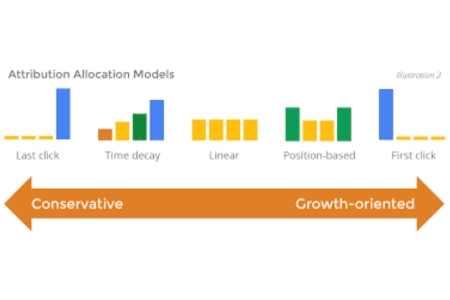
Market Research
Another gateway to measure advertising effectiveness is market research. This is by knowing audience preferences, behaviors, and trends in the market. It collects data through various techniques: focus groups, surveys, and competitor analysis. The needs and wants of target audiences are best met by understanding them through which a business can appropriately change its advertisements to acquire maximum results. Market research can allow a business organization to identify loopholes in the market through which they can position their brand correctly. Repetitive market research makes the advertising and promotional activities keep pace with the expectations of consumers and industry trends towards getting a more expected level of engagement and campaign results.

Challenges in Measuring Advertising Effectiveness
Multi-Channel Attribution
Measurement Issues Problems with the measurement of advertisements Multi-channel attribution An issue for marketers is how they can effectively measure multi-channel attribution, which will enable good accuracy in advertising effectiveness. Since consumers interact with brands at various contact points of social media, email, and websites, it is challenging to attribute the right conversion to each touch point. The choice between models might give differing insights on which touchpoints contribute most significantly to sales. This complexity may result in over- or under-allocation of marketing budgets and strategies. The way to overcome such a challenge is to utilize powerful analytics tools and have an elaborate model of attribution that considers the total travel of a customer for better, clearer channel performance and effectiveness.
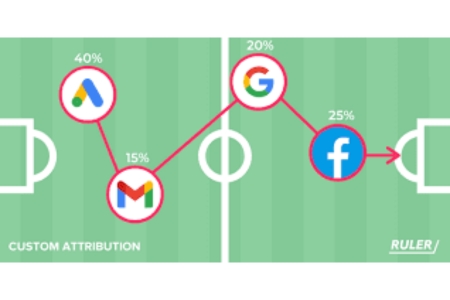
Time Lag in Results
Another issue is that the outcome measures may carry a time lag, which might restrict accurate measures of advertising's effectiveness. The impact of the advertisement campaign is not instantaneous; it takes some time for a customer to purchase an item once he is exposed to an ad. This does add complexity, which makes it challenging to measure performance at any given time. This makes it practically difficult for marketers to connect a particular action to a person and associate the particular action with their exposure to a specific ad, which further complicates the tracking of any actual-time result. In such a case, the issue would be solved by having tracking methods that even are long term by assessing data post the campaign, providing a better encompassing view of the performance across time and hence adjustments through strategic information.

Data Privacy and Tracking Limitations
Data privacy and tracking limitations remain the leading hurdles for measuring advertising effectiveness. Even more restrictions, in the case of time, as with the emergence of GDPR or CCPA, businesses are restricted in the way they collect and how they use consumer data. In this regard, these laws will strike every feature that relates to tracking, hence a poor derivation of an ideal understanding of how users behave and how campaigns are performing. More so, most consumers have proven sensitive about privacy and opt out of tracking technologies. This can be a partial data-in situation that presents a challenge in carrying out analysis and making decisions. Business operations must find their focus on the elements of transparent data practice, while investing in PrivacyCompliant tools, toward respecting the rights of the consumer at the same time as offering insightful value.

Best Practices for Improving Advertising Effectiveness
Know your target audience:
You know what they like and don't like, what they do, and what they want. You know where they hurt. The more precise your messaging is about your target audience, the better you will be at delivering precisely what they want to hear, as measured by data. And that way, you're going to enjoy higher engagement and conversion rates.

Use A/B Testing:
The constant testing of different versions of your ads will indicate which headline or image call-to-action works best. Data drives continuous optimization.

Data Analytics:
Utilize tracking tools and analytics software to be on top of what is happening in real-time in your campaign. This will help in analyzing the data plus making adjustments so that your advertising strategies can be maximized to full effect.

Conclusion
For any advertisement campaign, business enterprises must concentrate more on important parameters like the return on investment, conversion rates, click-through rates, and cost per acquisition. A/B testing, including analytics platforms and customer feedback, would give an idea about the possible outcomes of a campaign. By getting these factors measured with much care, companies can further fine-tune their strategies in order to have better audience engagement and maximize marketing spend. In this method of allocation, advertisements make sure that the advertising dollars are spent in the best way possible to generate returns and sustain growth in a competitive marketplace, thereby creating an overall better impact from their advertising campaigns.
Why choose Excellent Publicity for your brand advertising?
Excellent Publicity is one of the leading advertising agencies in India that helps your brand flourish and garner more leads for business. With our wide range of services, we have perfected the art of business growth for every kind of offline and digital advertising need.
Partner with us on branding today! Contact us to know how our expertise can give a boost to the traffic on your website, enhance brand awareness, and increase audience reach and recognition.
The following key metrics are most important to understand how well your ads would perform: ROI, conversion rates, CTR, and CPA. These are what would help determine how an ad connects with an audience regarding the actions needed.
Google Analytics, Facebook Ads Manager, or any other A/B testing platforms give the ability to have a better understanding of the behavior of my users and campaign performance, as well as the required crucial metrics to make informed decisions.
Some common issues campaign measurement will face while trying to measure the effectiveness of multi-channel ad campaigns include incorrect attribution of conversions by several channels, delay in results attained, and now data privacy regulation. All this makes tracking and analytics complicated in practice, causing difficulties in the overall evaluation of campaign performance.



